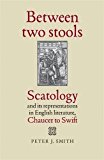
Between two stools: Scatology and its representations in English literature, Chaucer to Swift PDF
304 Pages·2015·4.5242 MB·other
Most books are stored in the elastic cloud where traffic is expensive. For this reason, we have a limit on daily download.
Preview Between two stools: Scatology and its representations in English literature, Chaucer to Swift
Description:
Between two stools investigates the representation of scatology - humorous, carnivalesque, satirical, damning and otherwise - in English literature from the middle ages to the eighteenth century. While a number of recent publications have attempted to analyse the employment of scatology in literature, culture or the arts, they remain, to date, rare examples of a preparedness to discuss such material. This study is the first to consider the topic over such a long historical period, allowing a thorough and original exploration of its foundations and traditions. Smith contends that the 'two stools' stand for two broadly distinctive attitudes towards scatology. The first is a carnivalesque, merry, even hearty disposition, typified by the writings of Chaucer and Shakespeare. The second is self-disgust, an attitude characterised by withering misanthropy and hypochondria. He locates this shift in sensibility in the crisis of the English Civil War and the aftermath of the Restoration. Smith demonstrates how the combination of high and low cultures manifests the capacity to run canonical and carnivalesque together so that sanctioned and civilised artefacts and scatological humour frequently co-exist in the works under discussion, evidence of an earlier culture's aptitude (now lost) to occupy a position between two stools. Of interest to cultural and literary historians, this ground-breaking study testifies to the arrival of scatology as an academic subject, at the same time recognising that it remains if not outside, then at least at the margins of conventional scholarship.
See more
The list of books you might like
Most books are stored in the elastic cloud where traffic is expensive. For this reason, we have a limit on daily download.
